Uncategorized
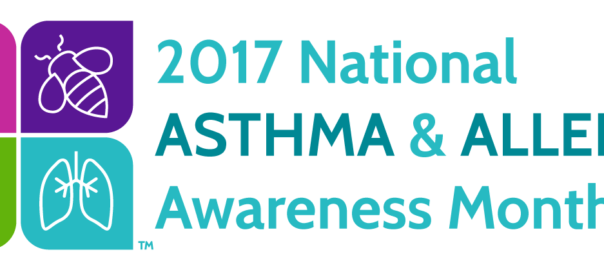
May 8, 2017. May Allergy & Asthma Awareness Month 2017
May is National Asthma and Allergy Awareness Month
With allergies and asthma on the rise in the United States, education and awareness are critical to attaining proper treatment and care. Throughout May which is a peak season for allergy & asthma flares, The Asthma Center joins the Asthma & Allergy Foundation of America in raising allergy and asthma awareness with a new blog series about allergy & awareness. Check back in with us on our blog, on facebook, or subscribe to learn from our board-certified allergists for frequent updates.
Help us celebrate and raise awareness! Share your stories on The Asthma Center’s Facebook page, and let us know your tips for living with allergies & asthma.
Allergies & Mental Health
May 8, 2017. Allergies can take on mental and physical complications beyond the symptoms of sneezing attacks, itchy nose, ears & eyes, runny nose & watery eyes, stuffiness and sinus headache.
The top 5 effects of allergies on performance, behavior, and mental health:
- Sleep compromise which can affect concentration and energy.
- Irritability and behavioral problems especially in kids.
- Reduced ability to work effectively and be productive.
- Deterioration in overall quality of life.
- Social embarrassment trying to avoid sneezing, coughing, runny eyes and nose and heavy nasal secretions.
Allergy Co-Conditions
May 8, 2017. People with upper respiratory allergies not only experience classic sneezing, itching, congestion, post nasal drip and sinus pressure, but also can suffer from a myriad of other co-conditions. A recent national survey from 2012 identified the 5 most common co-conditions for people with allergies:
- 40% had asthma
- 35% had heartburn or gastrointestinal reflux (GERD)
- 33% had sleep disturbances with 10% suffering from actual sleep apnea
- 30% had sinusitis
- 15% had migraines
Bottom Line: Unmanaged allergies may contribute to the onset of other respiratory and non respiratory conditions. Who knew allergies could be so complex and pervasive!
Board-Certified Allergists, Pediatric Allergists & Asthma Specialists
Effective treatment of allergies and other related medical conditions first depends on a correct and proper diagnosis. Seeing a board-certified allergist is your first stop to healthy living with allergies.
At The Asthma Center, our allergists and pediatric allergists help our patients manage their allergies by determining what local spring allergens cause symptoms. For example, with spring allergies, we identify which local trees (including Oak, Pine, Mulberry and Birch) and grasses trigger allergy symptoms by using minimally invasive in-house diagnostics, like allergy skin testing. Pairing these results with local knowledge of allergy triggers like pollen, ragweed and mold, our allergists develop personalized plans that treat not only the symptoms but also the cause of allergies. And because allergy symptoms often spike with pollen, we know exactly when to adjust allergy medication – providing more relief when conditions are bad and less medication every time else.
Our allergists, pediatric allergists, and asthma specialists treat patients in 9 convenient locations throughout the Delaware Valley including Philadelphia (Center City Philadelphia, Society Hill Philadelphia, Northeast Philadelphia), The Main Line – Montgomery County (Bala Cynwyd – Lower Merion PA), Bucks County (Langhorne PA), and South Jersey (Mt. Laurel NJ, Woodbury NJ, Hamilton NJ, Forked River NJ).
Ask about our Special Spring Saturday Hours for New Patients (available in selected locations)!
The health information contained in this article is meant for basic informational purposes only. It is not intended to serve as medical advice, substitute for a doctor’s appointment or to be used for diagnosing or treating a disease. For interviews and tours of the Delaware Valley’s only National Allergy Bureau (NAB) certified pollen, ragweed, and mold spore counting stations in Philadelphia, PA and Mt. Laurel, NJ, please email gwoodlyn@asthmacenter.com.
More Info
May 1, 2017. 5 Ways to Keep Pollen Out (of Your Eyes, Nose & Home)
Philadelphia, PA – May 1, 2017 – “Tree pollen increased and remains extreme. There’s more of everything after a hot and windy weekend…even more grass pollen, English plaintain weed pollen, even more mold spores.”
Dr. Donald Dvorin, Board Certified Allergist at The Asthma Center, and the only official National Allergy Bureau (NAB) certified pollen, ragweed and mold spore counter for the Delaware Valley.
What’s In the Air?
Tree Pollen: Extreme
At more than 3,300 pollen grains per 24 hours, tree pollen today is again extreme.(See How We Count Pollen) and may provoke severe allergy symptoms. Oak represents more than 85% of the total tree pollen count. Mulberry, Pine, and Birch tree pollen are all also present at very high levels.
More Details on today’s pollen, ragweed, and mold spore count
May is National Asthma and Allergy Awareness Month
With allergies and asthma on the rise in the United States, education and awareness are critical to attaining proper treatment and care. Throughout May which is a peak season for allergy & asthma flares, The Asthma Center joins the Asthma & Allergy Foundation of America to raising awareness with a new blog series: Tips for Living with Allergies and Asthma. Check back in with us or Subscribe to learn from our board certified allergists on all the latest methods to manage your allergies and asthma!
Help us celebrate and raise awareness! Share your stories on The Asthma Center’s fb page, and let us know your tips for living with allergies & asthma.
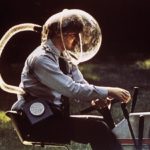
5 Ways to Keep Pollen Out (of Your Eyes, Nose & Home)
Reducing or limiting exposure to pollen is a key part of managing spring allergies. Wearing a “pollen helmet” or avoiding the outdoors completely typically are not practical for most allergy sufferers. Most allergy sufferers are familiar with the advice to wear long sleeves and pants when mowing the lawn or gardening and to limit the amount of time spent outdoors during the early morning hours when the most pollen is released into the air.
From The Asthma Center allergists, we have collected 5 tips beyond the conventional wisdom that can significantly reduce pollen exposure, especially on “bad pollen” days, and hopefully help you keep “merry for the month of May!”
1. Wash your face, particularly the eyebrows, after being outdoors.
Microscopic pollen grains can cling to eyebrows and skin. Just like it’s important during flu season to wash your hands to prevent flu symptoms, frequently washing your face and eyebrows after being outdoors can prevent eye and nasal allergy symptoms.
2. Wash your hair before going to bed at night after extended time spent outdoors and change pillowcases frequently.
Hair can be a magnet for microscopic pollen grains and mold spores, especially when extended time is spent outdoors. For those who are allergic, washing your hair (or your children’s hair) and changing pillowcases frequently can reduce exposure during sleep and help reduce morning allergy flares.
3. Avoid wearing contact lenses or switch to daily disposable contacts to avoid allergens building up on the lenses.
Pollen and other allergens as well as environmental irritants can all buildup on contact lenses leading to increased eye allergy symptoms during the peak season. Switching to eyeglasses or daily disposable contacts will help avoid this common exposure. Wear “wrap-around” sunglasses when outside for more eye protection from pollen particles.
4. Beware of tracking pollen, particularly grass pollen into your home.
Overlooked sources that may “sneak” pollen into the home include kids’ shoes and clothing, pets especially after playing outside in the grass, and morning newspaper sleeves.
5. Change air filters frequently for both your home and car.
During the peak allergy season, pollen can build up rapidly on air filters and then be distributed through ventilations into both homes and cars. Use the highest allergen filter available and change filters frequently to reduce this risk.
If reducing your exposure to pollen in combination with over-the-counter antihistamines and nasal sprays don’t work on your symptoms, it’s still not too late to get relief. A board-certified Allergist can help.
At The Asthma Center, our allergists and pediatric allergists help our patients manage their allergies by determining what local spring allergens cause symptoms. For example, with spring allergies, we identify which local trees (including Oak, Pine, Mulberry and Birch) and grasses trigger allergy symptoms by using minimally invasive in-house diagnostics, like allergy skin testing. Pairing these results with local knowledge of allergy triggers like pollen, ragweed and mold, our allergists develop personalized plans that treat not only the symptoms but also the cause of allergies. And because allergy symptoms often spike with pollen, we know exactly when to adjust allergy medication – providing more relief when conditions are bad and less medication every time else.
Our allergists, pediatric allergists, and asthma specialists treat patients in 9 convenient locations throughout the Delaware Valley including Philadelphia (Center City Philadelphia, Society Hill Philadelphia, Northeast Philadelphia), The Main Line – Montgomery County (Bala Cynwyd – Lower Merion PA), Bucks County (Langhorne PA), and South Jersey (Mt. Laurel NJ, Woodbury NJ, Hamilton NJ, Forked River NJ).
Ask about our Special Spring Saturday Hours for New Patients (available in selected locations)!
The health information contained in this article is meant for basic informational purposes only. It is not intended to serve as medical advice, substitute for a doctor’s appointment or to be used for diagnosing or treating a disease.
For interviews and tours of the Delaware Valley’s only National Allergy Bureau (NAB) certified pollen, ragweed, and mold spore counting stations in Philadelphia, PA and Mt. Laurel, NJ, please email gwoodlyn@asthmacenter.com.
More Info
April 18, 2017. Top Spring Allergy Signs & Symptoms
It’s not too late to recognize allergies and avoid misery!
1. Commonly Recognized Allergy Symptoms
- Sneezing
- Itchy, watery eyes
- Congestion
How can you tell if these symptoms are Allergies, a Cold or Sinusitis? Learn how to tell the difference!
2. Less Commonly Recognized Allergy Symptoms
- Puffy eyes and / or reactions to contacts (Eye Allergy)
- Contact Skin Rashes (Skin Allergy)
- Ear “popping” or “cracking” or “feeling like you’re underwater” (Ear Allergy)
- Loss of Smell or Taste (Smell Loss)
3. Allergic Shiners
While dark circles under the eye are often associated with getting too little sleep, they are big indicators of allergic rhinitis (allergies.)
What Parents Need to Know: Especially present in children, these “allergic shiners” have been known to get darker as the severity of allergies increases. If your child has dark circles under their eyes or on their eyelids (a color similar to a bruise), it is best to contact your physician/allergist to treat the underlying problem of allergies.
4. Allergic Salute
Spring sneezing and nasal congestion are just two of the many symptoms commonly associated with spring pollen allergy. Did you know that these symptoms lead to a telltale sign on the face? Not surprisingly, many allergy sufferers develop the habit of wiping or rubbing their nose in an upwards manner (known as the “allergic salute.”) Over time, this can lead to an observable crease across the nose. The habit develops, in part, because in addition to wiping mucus away, the act of pushing up the nose temporarily props open the air passages in the nostril to provide relief.
5. Bad Pollen Days
Other allergy symptoms can occur on “bad pollen” days (days of heavy pollen volume such as today’s extreme tree pollen). Flu-like symptoms, headaches, sore throat, and feeling of exhaustion or listlessness can occur.
Knowing “what’s in the air” can help you avoid or reduce your exposure to spring pollens. The Asthma Center’s daily Pollen, Ragweed and Mold Spore Counts are available by email! With counting stations in Philadelphia, PA and Mt. Laurel, NJ, we are Delaware Valley’s only official pollen source certified by the National Allergy Bureau. Subscribe to receive our daily counts by email and check out some of our other blog posts to learn more about what is in the air, how it can affect you, and what you can do about it.
These top allergy signs & symptoms will help you recognize allergies, and if over-the-counter antihistamines and nasal sprays don’t work on your symptoms, a board-certified allergist can help.
What Pollen is In the Air Today?
“Trees are extreme and grasses are increasing. Clearly we are in the first phase of the spring pollen season with more on the way.” – Dr. Donald Dvorin, Board Certified Allergist at The Asthma Center, and the only official National Allergy Bureau (NAB) certified pollen, ragweed and mold spore counter for the Delaware Valley. The picture above was taken by Dr. Dvorin of his car windshield.
Tree Pollen: Extreme. At over 1100 pollen grains per 24 hours, tree pollen today is extreme. (See How We Count Pollen)
Predominant: Oak Tree Pollen
Grass Pollen: Low
Ragweed Pollen: Not Seen
Other Weeds: Low
Mold Spores: High
At The Asthma Center, our allergists and pediatric allergists help our patients manage their allergies by determining what local spring allergens cause symptoms. For example with spring allergies we identify which local trees (including Oak and Pine) and grasses trigger allergy symptoms by using minimally invasive in-house diagnostics, like allergy skin testing. Pairing these results with local knowledge of allergy triggers like pollen, ragweed and mold, our allergists develop personalized plans that treat not only the symptoms but also the cause of allergies. And because allergy symptoms often spike with pollen, we know exactly when to adjust allergy medication – providing more relief when conditions are bad and less medication every time else.
Our allergists, pediatric allergists, and asthma specialists treat patients in 9 convenient locations throughout the Delaware Valley including Philadelphia (Center City Philadelphia, Society Hill Philadelphia, Northeast Philadelphia), The Main Line – Montgomery County (Bala Cynwyd – Lower Merion PA), Bucks County (Langhorne PA), and South Jersey (Mt. Laurel NJ, Woodbury NJ, Hamilton NJ, Forked River NJ).
The health information contained in this article is meant for basic informational purposes only. It is not intended to serve as medical advice, substitute for a doctor’s appointment or to be used for diagnosing or treating a disease. For interviews and tours of the Delaware Valley’s only National Allergy Bureau (NAB) certified pollen, ragweed, and mold spore counting stations in Philadelphia, PA and Mt. Laurel, NJ, please email gwoodlyn@asthmacenter.com.
More Info
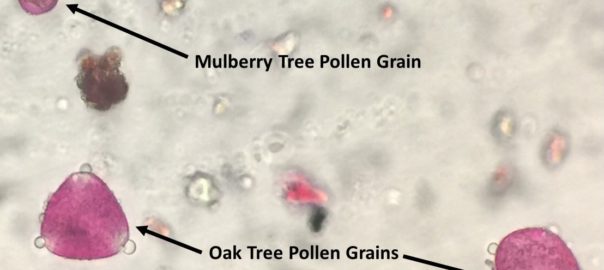
April 11, 2017. Extreme Surge: Early Oak & Pine Tree Pollen
Philadelphia, PA – April 11, 2017 – “The nearly extreme level of tree pollen today—more than a seven-fold surge — produced surprises including early increases of Oak & Pine tree pollen.” – Dr. Donald Dvorin, Board Certified Allergist at The Asthma Center, and the only official National Allergy Bureau (NAB) certified pollen, ragweed and mold spore counter for the Delaware Valley. The picture above was taken right from Dr. Dvorin microscope this morning, and features Oak and Mulberry tree pollen.
The Asthma Center’s phones are busy today with reports of allergy misery: nasal congestion and blockage, sneezing, itchy eyes, and coughing!
What’s In the Air?
Tree Pollen: Nearly Extreme. At nearly 950 pollen grains per 24 hours, tree pollen today is nearly extreme. (See How We Count Pollen)
Predominant: Oak & Pine Tree Pollen
Many of the popular “pollen forecasts” are reporting Juniper & Maple as the major tree pollen which is misleading even though these trees are considered traditional “early tree pollinators.”
As the only official National Allergy Bureau (NAB) certified pollen, ragweed and mold spore counter for Philadelphia, PA and South Jersey, Dr. Donald Dvorin found that more than half quarters of today’s air sample is comprised of Oak tree pollen and roughly another one quarter of today’s sample is Pine tree pollen.
Oak is the predominant hardwood tree species in the Philadelphia, PA and South Jersey area, and a single medium to large Oak tree can produce several million pollen grains. When you consider how tiny each pollen grain is (2438 micrometers), that’s a lot of tree pollen.
Dr. Dvorin reviewed his historical data, this very high level of Oak tree pollen is occurring approximately one week to 10 days earlier than last spring (2016) while today’s very high level of Pine tree pollen is several weeks early.
Also of note, Dr. Dvorin observed high levels of the following tree pollen: Walnut, Birch, Mulberry, Juniper, and Sycamore and low levels of Maple, Willow, Ash, Sweetgum, Hickory/Pecan, and Hackberry tree pollen. Per Dr. Dvorin, the sighting of Hackberry tree pollen is very rare.
Grass Pollen: Low
Ragweed Pollen: Not Seen
Other Weeds: Low
Plantain weed pollen debuts today at low levels. Dr. Dvorin reviewed his historical data, and this low level of plantain weed pollen is more than two weeks earlier than last spring (2016).
Mold Spores: High
What to do about Allergies?
“Follow our pollen counts and pollen blogs,” says Dr. Dvorin. “I’ll keep you as informed as I can about ‘what’s actually in the air”, and be proactive about treatment—if you’re having a bad time now, find out exactly what you’re allergic to, and keep history from repeating itself!”
No two allergy sufferers are alike, so over-the-counter medication may not work well for everyone’s symptoms. Instead, our allergists and pediatric allergists develop personalized treatment plans to help our patients feel better. We identify specific levels of allergic sensitivity using minimally invasive in-house diagnostics, like allergy skin testing. Pairing these results with local knowledge of allergy triggers like pollen, ragweed and mold, our allergists develop personalized plans that treat not only the symptoms but also the cause of allergies. And because allergy symptoms often spike with pollen, we know exactly when to adjust allergy medication – providing more relief when conditions are bad and less medication every time else.
Our allergists, pediatric allergists, and asthma specialists treat patients in 9 convenient locations throughout the Delaware Valley including Philadelphia (Center City Philadelphia, Society Hill Philadelphia, Northeast Philadelphia), The Main Line – Montgomery County (Bala Cynwyd – Lower Merion PA), Bucks County (Langhorne PA), and South Jersey (Mt. Laurel NJ, Woodbury NJ, Hamilton NJ, Forked River NJ).
Ask about our Special Spring Saturday Hours for New Patients (available in selected locations)!
Did You Know? Pollen, Ragweed & Mold Spore Counts Direct to Your Inbox!
The Asthma Center’s daily Pollen, Ragweed and Mold Spore Counts are available by email! With counting stations in Philadelphia, PA and Mt. Laurel, NJ, we are Delaware Valley’s only official pollen source certified by the National Allergy Bureau. Subscribe to receive our daily counts by email and check out some of our other blog posts to learn more about what is in the air, how it can affect you, and what you can do about it.
The health information contained in this article is meant for basic informational purposes only. It is not intended to serve as medical advice, substitute for a doctor’s appointment or to be used for diagnosing or treating a disease.
For interviews and tours of the Delaware Valley’s only National Allergy Bureau (NAB) certified pollen, ragweed, and mold spore counting stations in Philadelphia, PA and Mt. Laurel, NJ, please email gwoodlyn@asthmacenter.com.
More Info

March 31, 2017. EpiPen Auto-Injector Recall Facts
Philadelphia, PA – March 31, 2017 – UPDATE: FDA announces nationwide recall of EpiPen® and EpiPen®JR. If you have been prescribed an adrenaline auto-injector, The Asthma Center advises you to check the lot number and expiration date.
According to the 3/29/2017 FDA announcement, at this time, the 13 lots identified – distributed between Dec. 17, 2015, and July 1, 2016 – are the only EpiPen lots impacted by the U.S. recall.
Product/Dosage NDC Number Lot Number Expiration Date
EpiPen Jr Auto-Injector, 0.15 mg 49502-501-02 5GN767 April 2017
EpiPen Jr Auto-Injector, 0.15 mg 49502-501-02 5GN773 April 2017
EpiPen Auto-Injector, 0.3 mg 49502-500-02 5GM631 April 2017
EpiPen Auto-Injector, 0.3 mg 49502-500-02 5GM640 April 2017
EpiPen Jr Auto-Injector, 0.15 mg 49502-501-02 6GN215 September 2017
EpiPen Auto-Injector, 0.3 mg 49502-500-02 6GM082 September 2017
EpiPen Auto-Injector, 0.3 mg 49502-500-02 6GM072 September 2017
EpiPen Auto-Injector, 0.3 mg 49502-500-02 6GM081 September 2017
EpiPen Auto-Injector, 0.3 mg 49502-500-02 6GM088 October 2017
EpiPen Auto-Injector, 0.3 mg 49502-500-02 6GM199 October 2017
EpiPen Auto-Injector, 0.3 mg 49502-500-02 6GM091 October 2017
EpiPen Auto-Injector, 0.3 mg 49502-500-02 6GM198 October 2017
EpiPen Auto-Injector, 0.3 mg 49502-500-02 6GM087 October 2017
What to do:
- If you have a 0.15 mg EpiPen® Jr or 0.3 mg EpiPen® , check the lot number and expiration which are found on the label of the pen or on the end of the carton.
- If your 0.15 mg EpiPen® Jr or 0.3 mg EpiPen® matches any of the lot numbers/expirations above, return it immediately to your pharmacist. Your pharmacist will replace it FREE OF CHARGE.
Philadelphia, PA – March 29, 2017 – “According to the makers of EpiPen®, the recalled EpiPen® 300 µg Auto-Injectors were not distributed in the United States. However, if you have been prescribed an adrenaline auto-injector, we still advise you to check the lot number and expiration date.”
Dr. Marc Goldstein, Board-Certified Allergist at The Asthma Center
EpiPen Recall Facts
- EpiPen®Adrenaline Injection Auto-Injector is used to treatment of allergic emergencies (Anaphylaxis).
- Mylan-owned Alphapharm Pty Ltd, following consultation with the Therapeutic Goods Administration, is recalling the following batches of EpiPen®300 microgram (µg) Adrenaline Injection Syringe Auto-Injectors due to the potential that these devices may contain a defective part that may result in the device failing to activate or requiring increased force to activate.
EpiPen® 300 microgram (µg) Adrenaline Injection Syringe Auto-Injector
Batch Number(s) 5FA665, 5FA6651, 5FA6652, 5FA6653
Expiration: Apr 17
- Devices included in the recall were distributed in Australia, New Zealand, Japan and a variety of European countries including Denmark, Norway, Finland and Ireland, but not in the United States.
- If you have a 300 microgram (µg) EpiPen® , check the batch number and expiration which are found on the label of the pen or on the end of the carton.
If your EpiPen® 300 microgram (µg) matches the batch numbers 5FA665, 5FA6651, 5FA6652, 5FA6653 and has an expiration of Apr 17, return it immediately to your pharmacist. Your pharmacist will replace it FREE OF CHARGE.
Anaphylaxis: The Most Serious Allergic Reaction
Allergists recognize that the anaphylaxis (a life-threatening allergic emergency) can have multiple causes such as allergic sensitivity to foods, drugs, insect sting, and exercise. Evaluation for risk of anaphylaxis extensive history, physical examination, and specific diagnostic tests to identify all possible causes. Our allergists and pediatric allergists at The Asthma Center are well suited to evaluate individuals with anaphylaxis.
The Asthma Center allergists and pediatric allergists can make a potentially life-saving difference if you (or someone you love) are at risk for anaphylaxis.
Our allergists, pediatric allergists, and asthma specialists treat patients in 9 convenient locations throughout the Delaware Valley including Philadelphia (Center City Philadelphia, Society Hill Philadelphia, Northeast Philadelphia), The Main Line – Montgomery County (Bala Cynwyd – Lower Merion PA), Bucks County (Langhorne PA), and South Jersey (Mt. Laurel NJ, Woodbury NJ, Hamilton NJ, Forked River NJ).
The health information contained in this article is meant for basic informational purposes only. It is not intended to serve as medical advice, substitute for a doctor’s appointment or to be used for diagnosing or treating a disease.
For interviews and tours of the Delaware Valley’s only National Allergy Bureau (NAB) certified pollen, ragweed, and mold spore counting stations in Philadelphia, PA and Mt. Laurel, NJ, please email gwoodlyn@asthmacenter.com.
More Info
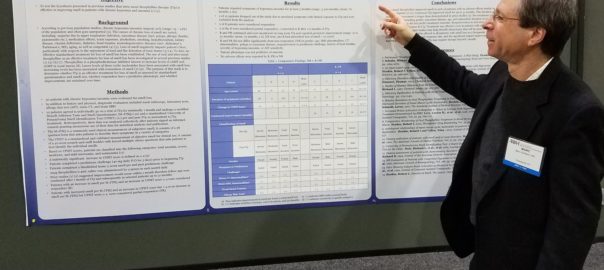
March 29, 2017. Loss of Smell? Allergies? Promising New Research & Hope
Philadelphia, PA – March 29, 2017 – “Allergists nationwide responded enthusiastically to the results of our original research because it represents hope for so many individuals with upper respiratory tract problems, like allergies, sinus disease and nasal polyps, who have lost or limited sense of smell.” – Dr. Marc Goldstein, Board-Certified Allergist at The Asthma Center
Watch Dr. Goldstein’s CBS3 Interview
Ground-Breaking Treatment for Loss of Smell
Loss of smell, either partial (hyposmia) or total (anosmia) affects upwards of 40 to 50 million Americans and can affect a diverse group of individuals (those with upper respiratory allergies, nasal polyp disease, sinus disease, post viral upper respiratory infection, head trauma or neurogenic disorders.) Treatment for loss of the sense of smell has long been very limited. Dr. Marc Goldstein, one of the founding Allergists from The Asthma Center just presented exciting new research for the treatment of loss of the sense of smell at the national meeting for Allergists (American Academy of Allergy, Asthma, and Immunology 2017), held in Atlanta, Georgia.
Intranasal theophylline sprayed into the nose objectively improved and sustained the sense of smell in 50% of the individuals who participated (where previous treatments had failed.) This approach represents a ground-breaking treatment for anyone with “lost” or reduced sense of smell.
Why is this Ground-Breaking News?
According to research published in the Journal of Science in 2014, the human nose can smell at least one trillion distinct scents. The sense of smell (considered the “oldest of the senses”) is one of the most important senses for daily life in terms of how we interact with the world—from how we enjoy food to how smell triggers emotions and memories and safeguards our well-being. Loss, or impairment, of the sense of smell can lead to a significant deterioration in the quality of life for both adults and children who have allergies, sinus disease, and nasal polyps.
Loss of the sense of smell is under-recognized by the medical community. Until now, because only limited treatment options were available, individuals who had “lost” sense of smell were confined to living with this disability.
With 50% of participants showing objective improvement, the results of The Asthma Center’s original research with intranasal theophylline represent a promising break-through and hope for relief for many adults and children.
What to do if you have “loss” of smell?
Allergists recognize that loss of the sense of smell can be associated with a variety of upper respiratory tract problems. Evaluation of loss of smell includes an extensive history, physical examination, and specific diagnostic tests to identify possible causes such as allergies, chronic sinus disease, nasal polyps, drug reactions and neurologic disorders. Our adult and pediatric allergists at The Asthma Center are well suited to evaluate individuals with the vexing problem of loss of smell.
And now, treatment researched and offered at The Asthma Center can potentially make a significant difference for those with chronic smell loss.
Facts About Sense of Smell
Source: EverydayHealth
- Scent cells are renewed every 30 to 60 days
- You can smell fear and disgust
- Women have a better sense of smell than men
- Some of the most pleasant or pleasurable scents include vanilla, cinnamon, crayons and cookies
- Dogs have nearly 44 times more scent cells than humans
- Each human has their own distinct odor
The Asthma Center thanks Stephanie Stahl for helping us share this new smell loss research in a CBS Philly interview with Dr. Goldstein.

Our allergists, pediatric allergists, and asthma specialists treat patients in 9 convenient locations throughout the Delaware Valley including Philadelphia (Center City Philadelphia, Society Hill Philadelphia, Northeast Philadelphia), The Main Line – Montgomery County (Bala Cynwyd – Lower Merion PA), Bucks County (Langhorne PA), and South Jersey (Mt. Laurel NJ, Woodbury NJ, Hamilton NJ, Forked River NJ).
The health information contained in this article is meant for basic informational purposes only. It is not intended to serve as medical advice, substitute for a doctor’s appointment or to be used for diagnosing or treating a disease. For interviews and tours of the Delaware Valley’s only National Allergy Bureau (NAB) certified pollen, ragweed, and mold spore counting stations in Philadelphia, PA and Mt. Laurel, NJ, please email gwoodlyn@asthmacenter.com.
More Info
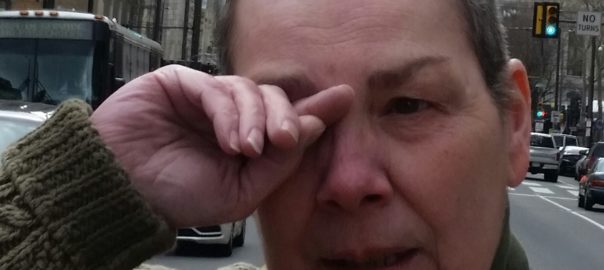
March 3, 2017. Eye Allergy: Itchy Watery Eyes? Is it Tree Pollen?
“Allergic eye symptoms can impact anyone-even our very own Allergy Lab Technician, Ina Frankel” (Photo Courtesy of The Asthma Center)
Philadelphia, PA – March 3, 2017 – With the presence of very high to extreme levels of early tree pollen in the air, if your eyes are itchy now, eye allergy could be the cause.” – Dr. Marc Goldstein, Board-Certified Allergist at The Asthma Center
“As soon as Juniper started sprouting last week, my eyes started itching. “ That’s how Joe, one of The Asthma Center’s longtime patients described his symptoms to Dr. Goldstein today. (Thank you Joe for sharing your experience!) And Joe’s experience is not unique – over the last two weeks, complaints of eye symptoms have spiked across our allergists’ offices. Usually allergy related eye symptoms hit hardest in the spring, most likely due to higher volumes of pollen in the air. But as tree pollen has spiked in Philadelphia recently, the past few weeks have been particularly harsh for allergy sufferers.
Prevalent symptoms include:
- Itchy, watery eyes
- Eyelid problems
- Dark circles around the eyes
- Eye burning
- Eyes sticking together
- Dry eyes
- Reactions to contacts
Are Eye Allergies to Blame?
Eye allergy is caused when mast cells release chemical mediators (histamines) which trigger allergic reactions. Mast cells superpopulate the lining of the eyes which naturally come in contact with the same air that is inhaled through the nose and mouth. When large amounts of an environment allergen (example: Juniper/Cedar tree pollen and all other early blooming trees) are present, the eyes become a “target” for eye allergy symptoms.
Why now? What’s In the Air Now?
As the only official certified pollen, ragweed and mold spore counter for Delaware Valley, Dr. Dvorin continues to observe very high and extreme levels of early tree pollen and high levels of outdoor mold spores in the air samples collected for Philadelphia and Mount Laurel, NJ. Juniper/Cedar tree pollen is the predominant pollen in the air currently. Other tree pollen present include Maple and Elm tree pollen. And as long as tree pollen stays prevalent in the air, allergy sufferers unfortunately will continue to experience eye related symptoms.
What to do about Eye Allergies?
No two allergy sufferers are alike, so over-the-counter medication may not work well for everyone’s symptoms. Instead, our allergists and pediatric allergists develop personalized treatment plans to help our patients feel better. We identify specific levels of allergic sensitivity using minimally invasive in-house diagnostics, like allergy skin testing. Pairing these results with local knowledge of allergy triggers like pollen, ragweed and mold, our allergists develop personalized plans that treat not only the symptoms but also the cause of allergies. And because allergy symptoms often spike with pollen, we know exactly when to adjust allergy medication – providing more relief when conditions are bad and less medication every time else.
Our allergists, pediatric allergists, and asthma specialists treat patients in 9 convenient locations throughout the Delaware Valley including Philadelphia (Center City Philadelphia, Society Hill Philadelphia, Northeast Philadelphia), The Main Line – Montgomery County (Bala Cynwyd – Lower Merion PA), Bucks County (Langhorne PA), and South Jersey (Mt. Laurel NJ, Woodbury NJ, Hamilton NJ, Forked River NJ).
Did You Know? Pollen, Ragweed & Mold Spore Counts Direct to Your Inbox!
The Asthma Center’s daily Pollen, Ragweed and Mold Spore Counts are available by email! With counting stations in Philadelphia, PA and Mt. Laurel, NJ, we are Delaware Valley’s only official pollen source certified by the National Allergy Bureau. Subscribe to receive our daily counts by email and check out some of our other blog posts to learn more about what is in the air, how it can affect you, and what you can do about it.
For interviews and tours of the Delaware Valley’s only certified pollen and mold spore stations for the National Allergy Bureau (NAB) certified pollen, ragweed, and mold spore counting stations in Philadelphia, PA and Mt. Laurel, NJ, please email gwoodlyn@asthmacenter.com
The health information contained in this article is meant for basic informational purposes only. It is not intended to serve as medical advice, substitute for a doctor’s appointment or to be used for diagnosing or treating a disease.
More Info
March 2, 2017. The Start of Pollen Season in Philadelphia: Early Tree Bloomers
For interviews and tours of the Delaware Valley’s only certified pollen and mold spore stations for the National Allergy Bureau (NAB) certified pollen, ragweed, and mold spore counting stations in Philadelphia, PA and Mt. Laurel, NJ, please email gwoodlyn@asthmacenter.com
The Start of Pollen Season in Philadelphia: Early Tree Bloomers
Philadelphia, PA – Board Certified Allergist Dr. Donald Dvorin of The Asthma Center announced today, March 2, 2017, the start of the Delaware Valley pollen season.
What’s in the Air Now?
As the only official certified pollen and mold spore counter for the Delaware Valley, Dr. Dvorin observed very high levels of early tree pollen and high levels of outdoor mold spores in the first official air samples collected for our region. Juniper/Cedar tree pollen is the predominant pollen in the air currently (more than 87% of the tree pollen observed). Juniper/Cedar is one of the Delaware Valley’s “early bloomers.” Other “early bloomers” present are Maple and Elm tree pollen.
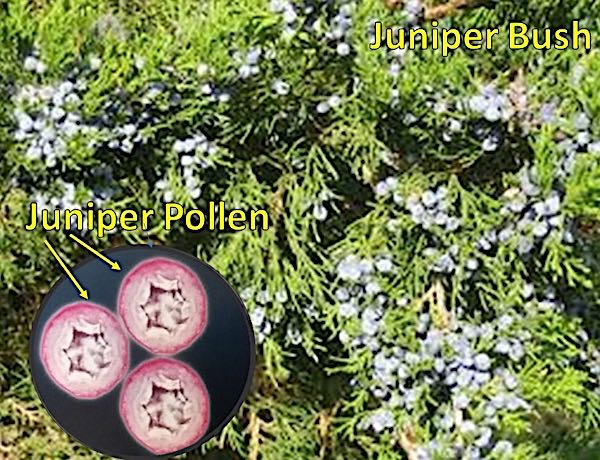
According to Dr. Dvorin, this early start to the pollen season is likely related to the trend of warmer than usual temperatures the Delaware Valley has been experiencing, particularly the consecutive warm “spring-like” days last week with temperatures climbing into the 70s. Colder temperatures, on the other hand, specifically prolonged periods of less than 40 degrees may “close up the buds” on trees temporarily.
Delaware Valley’s Official Pollen & Mold Spore Counts
Since 1992, The Asthma Center’s Allergist & Resident Pollen Expert, Dr. Donald Dvorin has monitored and analyzed our region’s air with Burkard pollen and mold air samplers. [See How We Count Pollen]
The Asthma Center has published pollen and mold spore data in peer reviewed medical journals and defined the relevant pollen and pollen seasons for Philadelphia and Southern New Jersey.
Throughout pollen season (early March through the fall), The Asthma Center operates two certified monitoring stations: one on a rooftop in Center City Philadelphia and the other atop a roof in Mount Laurel, NJ. Dr. Dvorin publishes daily pollen, mold, and ragweed counts through the spring, summer and fall which the region’s allergy sufferers rely on to help control and treat symptoms [Sign Up Here].
Dr. Dvorin has directly contributed to the field of pollen collection and counting for many years, and patients benefit directly from his work. Not only can allergy sufferers learn “what’s in the air,” the allergy specialists at The Asthma Center can test whether or not what’s in the air is triggering specific symptoms, for instance the tree pollen in the air today.
What to Expect for Philadelphia’s 2017 Pollen, Ragweed & Mold Season
“I’ll keep you as informed as I can about “what’s in the air,” so that you can be proactive about treatment, promises Dr. Dvorin and he added “Daily Counts are expected to begin Monday, March 6, 2017.” [Sign Up Here]
“Weather plays such a big role in the counts,” says Dr. Dvorin.
If current trends of warmer weather and windy conditions continue, we may see counts similar to 2016 when El Nino contributed to a spring pollen season with extreme levels present earlier than “normal” and more frequently than “typical.”
Dr. Dvorin reviewed the “start of pollen season” for the past 10 years and found that, generally speaking, pollen was present beginning the second week of March. During the majority of pollen season starts, tree pollen was observed at very high levels. However, in 4 out of the past 10 pollen seasons, extreme levels of tree pollen were observed within the first week, including 2016 when tree pollen was more than 2,000 pollen grains per cubic meter of air.
Dr. Dvorin on Pollen “Forecasts”
“Currently there is no published, scientifically validated model for pollen forecasting,” states Dr. Dvorin
Empirically, when The Asthma Center compares our pollen data with the forecasts that are promoted on the internet and phone apps, the correlation is poor. When The Asthma Center Board Certified Allergists take into account the symptoms experienced by the patients in our clinical practice, again, “the correlation with pollen forecasts is poor.”
“We are working on a forecast model at The Asthma Center for metropolitan Philadelphia,” stated Dr. Dvorin. “I’m not saying it’s impossible, but a validated, reliable predictive model is not available yet.
What’s the Deal with Pollen?
Trees and other plants reproduce by creating pollen grains, a fine “dust,” that is often visible to the naked eye (all that yellow or green dust on cars in the morning), but other times so small that it can only be seen under a microscope.
Not all pollen cause allergy symptoms, but those that do are light and can travel far on wind currents. Trees pollinate for two to three week intervals at various times and overlap with peaks observed in our region from late April through early May. Similar to tree pollen, grass pollen is produced as a means of reproduction and depends on wind currents to be transported. Airborne grass pollen appears in early April, peaks throughout May, and declines in June. The Delaware Valley also experiences a second burst of Grass pollen in September. Weed pollens are prevalent later in the summer, with Ragweed pollen a major culprit in our area.
Did You Know? Daily Pollen, Ragweed & Mold Spore Counts Direct to Your Inbox!
The Asthma Center’s daily Pollen, Ragweed and Mold Spore Counts, the Delaware Valley’s only official pollen, ragweed, and mold spore count station certified by the National Allergy Bureau are available via email. Subscribe to receive our daily counts by email or check out some of our other blog posts to learn more about what is in the air, how it can affect you, and what you can do about it.
Have Allergy & Asthma Symptoms
No two allergy & asthma sufferers are alike, so over-the-counter medication may not work well for everyone’s symptoms. Instead, our allergists and pediatric allergists develop personalized treatment plans to help out patients feel better. We identify specific levels of allergic sensitivity using minimally invasive in-house diagnostics, like allergy skin testing. Pairing these results with local knowledge of allergy triggers like pollen, ragweed and mold, our allergists develop personalized plans that treat not only the symptoms but also the cause of allergies. And because allergy symptoms often spike with pollen, we know exactly when to adjust allergy medication – providing more relief when conditions are bad and less medication every time else.
The health information contained in this article is meant for basic informational purposes only. It is not intended to serve as medical advice, substitute for a doctor’s appointment or to be used for diagnosing or treating a disease.
More Info
January 31, 2017. Asthma & Obesity: Are They Connected?
Media Inquiries: Please email gwoodlyn@asthmacenter.com
Asthma & Obesity:
New Study Reviewed by the Allergists of The Asthma Center
A new study published in the American Journal of Respiratory and Critical Care Medicine concluded that children with asthma may have increased risk of obesity. The study also concluded that the use of “rescue inhalers” appears to decrease the risk of obesity.
Childhood obesity is an epidemic in the United States with asthma and obesity often occurring together.
While a number of studies have found that obesity is frequently present in asthma patients, the exact relationship of the two conditions remains unknown. This new study suggests that lack of asthma treatment may actually increase a child’s risk for obesity.
Another important finding of this new study is that when “rescue inhalers” (short-acting) were used, the risk of obesity decreased for children with asthma. Now, more than ever, having an Asthma Action Plan is extremely important for any child or adult who has asthma.
As the Allergists at The Asthma Center know, individuals with asthma do not all experience the same set of symptoms such as coughing, wheezing, shortness of breath, or exercise-induced symptoms to name just a few. Researchers often separate different asthma types by grouping symptoms in clusters or “phenotypes” and have shown that in children, obesity is often present as a distinct clinical asthma phenotype.
Our highly trained Allergists, nurses and staff know that asthma symptoms can make day-to-day life difficult. For example, do you or your child have trouble breathing? Difficulty making it through a work-out, recess, playing sports, playing a musical wind instrument, or singing? Chest tightness? Wheezing? Shortness of breath? Trouble breathing with a cold or seasonally in the Spring and Fall? Trouble breathing when laughing or crying?
Whether your symptoms, or your child’s symptoms, are newly developed or have been around for years, The Asthma Center offers individualized treatment plans and comprehensive care for our patients. Click here to learn more about asthma, and how we help children and adults with asthma Get Relief!
Make an appointment to see an allergist – Why Choose Us?
The best way to fight your allergies & asthma is to visit a board certified allergist, learn what your allergies are, create a treatment plan, and adjust as needed. No two allergy & asthma sufferers are alike, so don’t rely on over the counter medications when you could be targeting your symptoms with the help of our allergy experts! At The Asthma Center, our goal is to personalize your treatment to help you find relief. One way we accomplish this is by identifying your allergies and specific levels of allergic sensitivity through allergy skin testing to help you plan your treatment. By following the local pollen counts, we are able to customize allergy regimens that prevent symptoms caused by taking too little or too much allergy medication
More Info
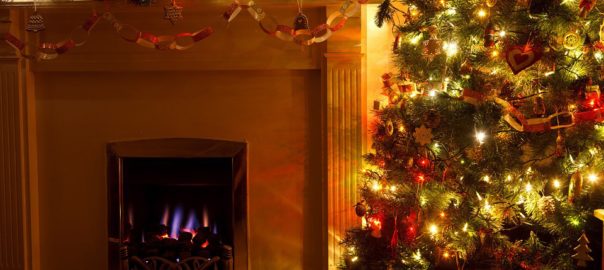
December 7, 2016. Keep Your Holidays Free of Sneezing & Wheezing
Media Inquiries: Please email gwoodlyn@asthmacenter.com
Keep Your Holidays Free of Sneezing & Wheezing
The Asthma Center is pleased to present Dr. Marc Goldstein’s vlog on how to keep your holidays free of sneezing & wheezing!
The health information contained in this article is meant for basic informational purposes only. It is not intended to serve as medical advice, substitute for a doctor’s appointment or to be used for diagnosing or treating a disease.
5 Tips for Christmas Allergies & Asthma
- Before you bring your Christmas tree inside, be sure to shake it out and rinse it off with a hose! With fresh cut trees, pay special attention to the bottom of the tree because this is where the most pollen, dirt and mold are found. With artificial trees, dust which may have collected throughout the year can be a potential allergy & asthma trigger as well, so be sure to clean these trees before decorating.
- Dust and clean ornaments, wreathes, and garlands before decorating.
- Avoid scented candles, pot pourri and aerosol sprays.
- Avoid fireplaces, ash & smoke–this can present particular problems for those with asthma.
- Avoid touching wreathes, garlands and trees if you have sensitive skin or severe allergies (which can result in contact dermatitis.)
Make an appointment to see an allergist – Why Choose Us?
The best way to fight your allergies & asthma is to visit a board certified allergist, learn what your allergies are, create a treatment plan, and adjust as needed. No two allergy & asthma sufferers are alike, so don’t rely on over the counter medications when you could be targeting your symptoms with the help of our allergy experts! At The Asthma Center, our goal is to personalize your treatment to help you find relief. One way we accomplish this is by identifying your allergies and specific levels of allergic sensitivity through allergy skin testing to help you plan your treatment. By following the local pollen counts, we are able to customize allergy regimens that prevent symptoms caused by taking too little or too much allergy medication.
More Info












